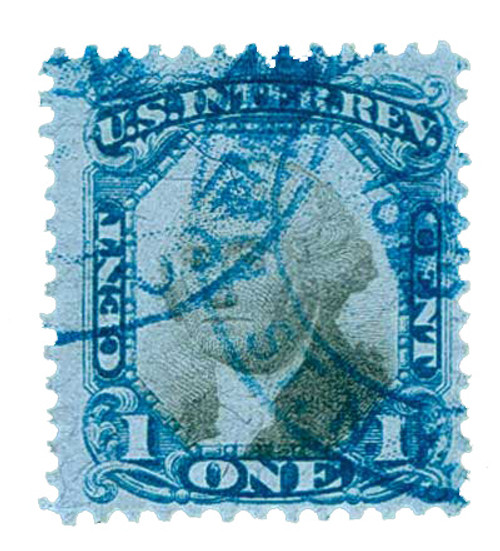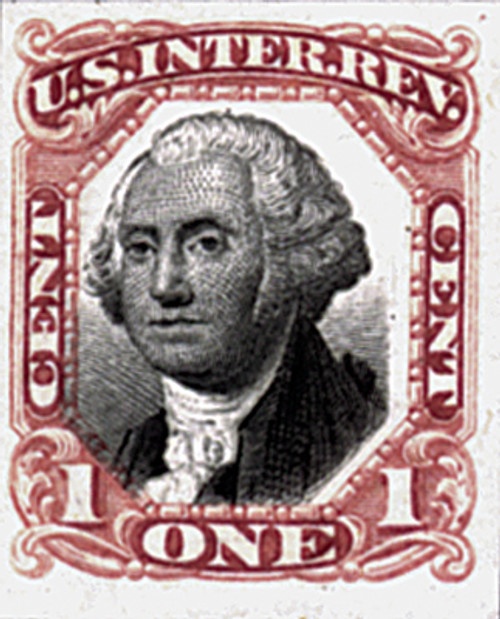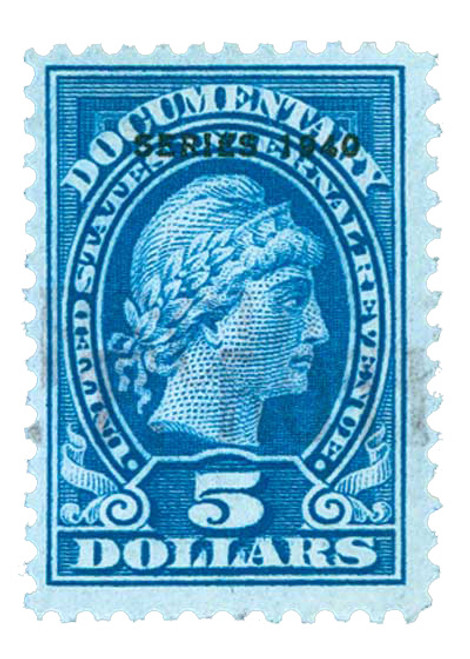
# R288//304 - 1940 1c-$5 US Internal Revenue Stamps - 15 Imperforate Pair
Hidden Away in the Vaults of the Smithsonian…
Hidden away for decades, these scarce Internal Revenue Documentary stamps have never before been in the hands of collectors…
Luckily the National Postal Museum offered the stamps for sale at auction, allowing them to eventually wind up with us collectors, where they belong. That means now you can finally add these seldom-seen Internal Revenue tax stamps to your U.S. Revenue collection.
As you know, Internal Revenue stamps were used to show payment of federal taxes on a number of documentary real estate transactions, such as mortgages and deeds. Smithsonian experts estimate only six pairs and a single are available worldwide for the $2, $4, and $5 denominations! The rest are locked away in museums and research collections. Good news – all three pairs of these denominations are included in this great collection – imagine owning such rarities!
The series of 1940 shows the portraits of U.S. Secretaries of the Treasury in order of their years of service, beginning with Alexander Hamilton. The series was overprinted with the year of issue so people couldn’t reuse stamps stolen from old documents. R288-90 and R300-02 were overprinted with an experimental “sensitive ink”, so the bluish-purple ink (with tiny gold flecks) would run and blur if soaked. The rest of the varieties were overprinted in black. All stamps could be used up to the end of the second year overprinted on them. Holders of the stamps could also get refunds for unused stamps up to four years from the date they were purchased. Any leftover stock from the previous year was required to be turned in when the next year’s stamps were issued, making accounting of quantities purchased and sold easier.
The 15 pairs included in this collection:
#R288-98 – printed with 400-subject plates (only four panes of 100 were issued)
#R300-301 and #R303-304 – printed with 200-subject plates (only four panes of 50 were issued)
Remember, these stamps were unavailable to collectors for decades as they sat in the vaults of the Smithsonian National Postal Museum. Take advantage of your chance to add these rarities to your collection today. Interest-free time payments are available to make it easy to own them.
Hidden Away in the Vaults of the Smithsonian…
Hidden away for decades, these scarce Internal Revenue Documentary stamps have never before been in the hands of collectors…
Luckily the National Postal Museum offered the stamps for sale at auction, allowing them to eventually wind up with us collectors, where they belong. That means now you can finally add these seldom-seen Internal Revenue tax stamps to your U.S. Revenue collection.
As you know, Internal Revenue stamps were used to show payment of federal taxes on a number of documentary real estate transactions, such as mortgages and deeds. Smithsonian experts estimate only six pairs and a single are available worldwide for the $2, $4, and $5 denominations! The rest are locked away in museums and research collections. Good news – all three pairs of these denominations are included in this great collection – imagine owning such rarities!
The series of 1940 shows the portraits of U.S. Secretaries of the Treasury in order of their years of service, beginning with Alexander Hamilton. The series was overprinted with the year of issue so people couldn’t reuse stamps stolen from old documents. R288-90 and R300-02 were overprinted with an experimental “sensitive ink”, so the bluish-purple ink (with tiny gold flecks) would run and blur if soaked. The rest of the varieties were overprinted in black. All stamps could be used up to the end of the second year overprinted on them. Holders of the stamps could also get refunds for unused stamps up to four years from the date they were purchased. Any leftover stock from the previous year was required to be turned in when the next year’s stamps were issued, making accounting of quantities purchased and sold easier.
The 15 pairs included in this collection:
#R288-98 – printed with 400-subject plates (only four panes of 100 were issued)
#R300-301 and #R303-304 – printed with 200-subject plates (only four panes of 50 were issued)
Remember, these stamps were unavailable to collectors for decades as they sat in the vaults of the Smithsonian National Postal Museum. Take advantage of your chance to add these rarities to your collection today. Interest-free time payments are available to make it easy to own them.












